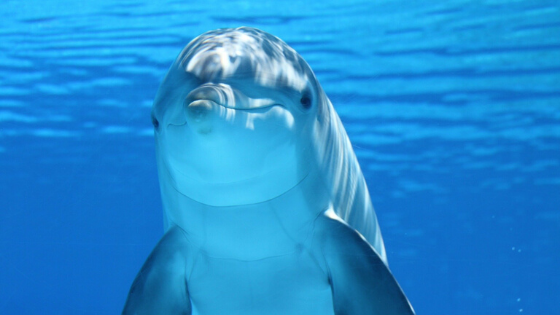The magic of dolphins has mesmerized us for centuries dating back to Ancient Greek times, where ancient folklore was riddled with tales of unique human and dolphin interactions. Dolphins have engaged with us through play, have tried to help, and even rescue us. Dolphins have been painted on caves and on plates, cups and have been painted. They have been treasured as guides to gods and goddesses and therefor have been respected and loved by many civilizations across the globe for centuries. The intelligence of a dolphin has connected us and created a kinship together.
These magnificent mammals have been communicating messages of love and wisdom through their close-knit family bonds and also with humans. Scientists have found that their social nature dives far deeper than that of a human. Their sense of one another is connected to the self. “While we think of our self as stopping at the edge of our body, completely separate from others, a dolphin’s sense of self might be quite different (Susan Casey, Dolphins, Voices in the Ocean, 2018, pg. 119-121).”
The awareness and social behavior of the dolphin relate directly to his pod as with a “flexible” boundary and a shared existence that is not known to human nature. This type of relatively unexplored sixth sense domain and beyond is yet to be recognized on a larger scale and is called synesthesia – a blending of senses together.
In human beings, this is a neurological condition seen in high creativity, where the person will “feel” colors or “taste” shapes and “smell” emotions (Casey, pg. 130-131). It is not surprising that the ways of the dolphin have been of incredible intrigue and long hours of research continue to be undertaken by scientists and biologists.
In our modern world, a world of exploitation, choosing money over nature, we are out of balance with nature and our responsible relationship with dolphins and other species co-existing with us on the planet. Dolphin hunting, hazardous waste, oil spills, and plastics continue to pollute our waters, food depletion, habitat destruction, rising levels of underwater noise levels due to drilling, ship engines, oil rigs, explosives, and military sonar damages the nervous system, affects circulation and the animals’ mental health. These stressors lead to irreversible suffering in our ocean life which leads to chronic disease and early deaths.
Despite our modern ways of living that keep putting the dolphin and other species at great danger, there are some facts that we need to understand which hopefully will allow us as a collective, to start treating all species with the care and respect they deserve. It is our moral responsibility to treat them with kindness and understanding.
The dolphins’ brain is larger than the human brain. Why is it necessary for the dolphin to have such a powerful brain if it were not essential for its survival? Scientists have found that like our human brain the dolphin brain has super neurons around three times more than we do. Their brains were also fully developed long before ours, about 30 million years ago, and allow the animal to relate to empathy, intuition, socialization including self-awareness. They process information much faster than we do. They are masters of sound frequencies and pitch that travel eight times farther than ours and the tones have the power to transform things. Their intricate sonar capability projected from their forehead to communicate is vast and expansive. We still do not fully comprehend their complex intelligence and their full abilities.
One reason that the dolphin has such an incredible brain is that they breathe consciously. What this means is that breathing for the dolphin is not an automatic body function. When the dolphin is underwater it will not breathe, and only will do so when it is above water. Each breath the dolphin takes is intentional. This means that when the dolphin sleeps, they are also partly awake. Dolphins are able to do this because they operate the two hemispheres of their brain independently. While one is functioning the other is resting (Casey, pg.30-31).
Scientists have studied dolphins in both captivity and in the vast oceans. Many researchers finally realize that living in captivity has taken a toll on the health, wellbeing, and natural life expectancies of the dolphin. Living in captivity leads to stress and a weakened immune system. The dolphins are therefore easily susceptible to diseases and infections. Human studies have shown that sound has powerful effects and can heal ailments and abnormalities. Sound baths for humans have been around for centuries and have played a pivotal role in healing and wellbeing on spiritual, mental, emotional, and physical levels.
Due to the highly sensitive sound capabilities of the dolphin and other species residing in the oceans and bodies of water, sounds have the ability to harm as we have already seen but also the power to heal. Sound therapy used with animals is a relatively new type of therapy that is beginning to be understood more readily as a way of benefiting all animal species and mammals. More research studies need to be conducted in order to validate what techniques and modalities will provide the most beneficial outcome for various animal species.

